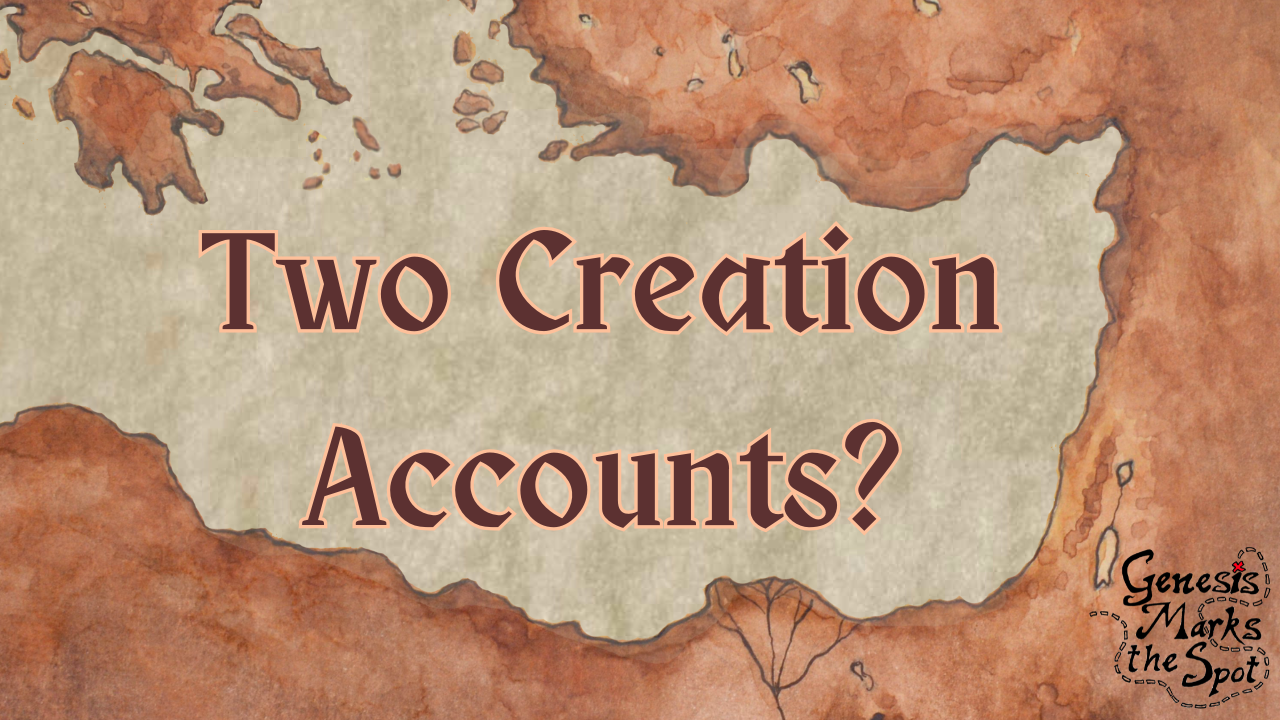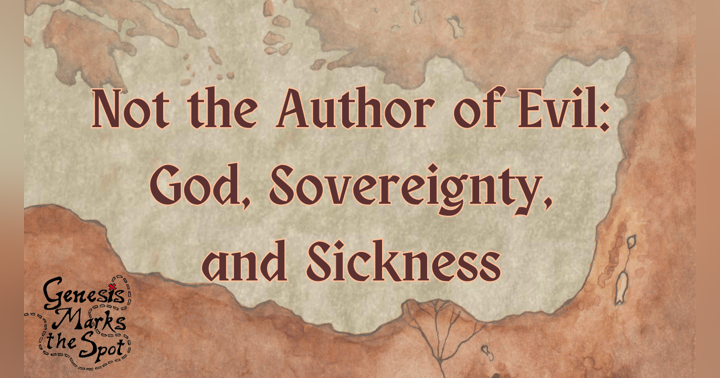Two Creation Accounts in Genesis 1-2?

Are Genesis 1 and 2 separate creation accounts? Is Genesis 2 a zoomed-in sequel? Or might there be something else entirely going on?
It’s a fair question, and one that has animated debates among scholars, theologians, skeptics, and curious readers for a very long time. On the surface, the two chapters seem to tell the story of creation twice. But if you read through a few more times and start to compare the two, you might notice what feel like some pretty big differences...dare we say: contradictions??
Well, the one thing I'll say from the get-go is that they don't contradict. But let’s explore why this question is so tricky, and how we might approach it with nuance rather than a forced either/or.
Why It’s Tricky
1. Different Names for God
Genesis 1 uses Elohim, while Genesis 2 introduces Yahweh Elohim. Source critics see this as evidence of different authors while others suggest the shift reflects a change in emphasis from a transcendent Creator (Elohim) to a relational covenant God (Yahweh). I talk about that here, in fact: The Names of God, Part 2: YHWH - Episode 074
2. Stylistic Shift
Genesis 1 is structured, poetic, and liturgical. It's marked by repeated phrases such as, "And God said..." and "It was good." Genesis 2 feels more narrative, earthy, and intimate. The pace slows down and zooms in on a specific locale. Dialog is introduced, and naming...not to mention the drama of human relationships. Of course, some will say that means, ah-ha! Different authors! But I think there's another way to see it: I think it suggests that we are to read these accounts slightly differently.
3. Apparent Contradictions in Order
In Genesis 1, we get:
-
Plants (Day 3)
-
Animals (Days 5–6)
-
Humans (Day 6, male and female together)
But Genesis 2 seems to reverse some of this, at least, it does if we're presuming these are referencing the same thing:
-
Man is formed first
-
Then plants (Gen 2:5)
-
Then animals
-
Then the woman
This has led many to question: How can Genesis 2 be a “zoom in” if the chronology doesn’t match? This is where our contradiction-spidey-senses are set off. Especially when we read in English, these seem like contradictions, but there's actually different terms used for plants. Also, just because things are mentioned does not mean they are created just then.
4. Genre & Scope
Another difference is that Genesis 1 is clearly very cosmic—heaven and earth, light and dark, time and space. Genesis 2, on the other hand, is localized—a garden, a river, a man, a woman, a tree. I'll suggest in a minute that the genre shift suggests the purpose has changed: from the big picture to the sacred place within the picture.
5. The Toledoth Marker (Gen 2:4)
Genesis 2:4 contains the first toledoth formula: “These are the generations of the heavens and the earth...” But does this end the first account or begin the second? Scholars debate this. Some see it as a conclusion to Genesis 1; others as the intro to what follows. Some will say that it's not connected because Genesis 1:1-2:3 function as a prologue.
6. Repetition Throughout Genesis
Genesis has multiple "double stories":
-
Abraham and Sarah’s “sister-wife” narrative (twice!)
-
Hagar and Ishmael’s expulsion (twice!)
-
Name changes, covenant promises, and blessings… told and retold.
This pattern suggests intentional literary repetition, or, if you’re more critical, editorial redaction. Either way, who ever wrote or compiled Genesis seems to have been comfortable with multiple tellings of important events. The thing about that is, once we start questioning the relevancy of Genesis 1-2 together, then we are going to question all these other accounts, too. Are they, really, the same account told slightly differently and patched together? And if they are, what does that do to our sense of inspiration? Tough questions, certainly.
7. Thematic Shifts: Kingship vs. Priesthood
Genesis 1 is about order, time, dominion, and sabbath—a royal cosmic liturgy. Genesis 2 is about land, relationship, vocation, and boundaries—a priestly setting in sacred space. And yet, it’s odd: if Genesis 1 is not priestly, then why is it all about the cosmic temple? (I talk about that here: A Postoperative Examination of the Cosmic Temple - Episode 016 and here: Modern Minds and Cosmic Geography - Episode 091)
Here's my idea: I'm going to suggest that one reason that they are different is that each chapter is painting a different sacred frame:
-
Genesis 1: Cosmic temple & liturgical time
-
Genesis 2: Earthly sacred space & covenantal land
Joiner or Splitter?
All right. Now, this brings us to a methodological question, one that's been pulled for other areas of theology:
Are you a joiner or a splitter?
In other words: do you try to harmonize similar passages into one cohesive story (a “joiner”), or do you accept and even embrace tensions and repetitions as indicators of distinct strands or intentions (a “splitter”)?
This question isn’t just about Genesis, it’s about how we read Scripture as a whole, but we might as well, you know, start at Genesis. We can loop in all kinds of other areas: think prophecy and fulfillment, eschatology, the Gospels, double fulfillment, patterns and typologies. Okay, okay, you get my point. Reading Genesis 1–2 may be our first training ground for this kind of discernment of our approach.
But here's some suggestions I have for you in thinking about Genesis 1 and 2; and I hope this opens some new puzzle boxes of thought for you, because this question is often asked as if there's only two obvious answers that we could have. And I'm not sure that's the case.
Maybe It’s Not About Chronology at All
Modern readers often bring in modern expectations:
-
Linear chronology
-
Logical consistency
-
Scientific precision
But what if Genesis wasn’t written to answer our questions?
Instead, try asking some of these questions (they're still modern, but they allow us to put down some of our baggage):
-
What is the purpose of each account?
-
What truth is being affirmed or taught?
-
What frame of reference is each chapter using?
John Walton has proposed that we distinguish between what the text affirms and what it references. Even if you don't like that system, it seems obvious that just because Genesis 1 and 2 reference the material world does not mean that these chapters don't affirm deeper theological truths:
-
The cosmos is God’s sacred temple.
-
Humanity is placed within it with priestly vocation.
-
The Sabbath is sacred time.
-
The garden is sacred space.
Psalm 104, Egypt, and the Bigger Picture
Here's a funny thing, too. People get all hot and bothered about Genesis 1-2. But Psalm 104 tells a poetic version of creation that also varies, but I don't see anyone calling it a “different creation account.”
Another interesting fact: Egyptian temples sometimes preserved multiple creation stories side-by-side—even when they "contradict" each other in sequence or cast. That’s because the ancients weren’t trying to write modern historical-literal-scientific accounts. They were framing the world theologically.
So… Are Genesis 1-2 the Same?
Here's my take, in brief: Genesis 1 and 2 are separate literary units with distinct purposes—but they’re not contradictory creation stories. (Nor is one trying to be "zoomed in.)
I suggest that they offer complementary liturgical frames:
-
Genesis 1: Time — Sacred rhythms and calendar. Cosmic order. Days. Sabbath. The heavens.
-
Genesis 2: Space — Localized earthly sacred land. Sacred trees. Human priestly presence.
These accounts aren’t sequential as much as layered, just like the heavens and earth themselves. Even though the heavens and the earth are "separate," they are so intimately connected that what happens in one, is reflected in the other. This is the worldview of the ancient world.
In addition, we can see that in Genesis 1, Adam is “mankind” (ʾādām). Both female and male. In Genesis 2, Adam is a man, but he's still talked about in ways that seem like we should really read him more as "mankind." I mean, after all, Eve comes from Adam's side; it's not like she's not "there" in Genesis 2; she just is split off by the end of the chapter. So even at the beginning of Genesis 2, Adam represents humanity in general.
If we stop forcing the text into modern molds and let it breathe in its own theological air, then we don't need to worry about these "contradictions."
Heaven and Earth, Not Natural and Supernatural
Another few thoughts about the heavens and earth/liturgical time and space/cosmic temple and local sacred space: The Bible doesn’t separate the world into "natural" and "supernatural." That’s our modern grid. Instead, the Bible mirrors heaven and earth, sacred and common, cosmic and terrestrial, all woven together.
I would not say that Genesis 2 is "zoomed in", because that's still thinking modern-chronology. But I would say that Genesis 1 and 2 tell the same story, with two purposes:
-
Heaven’s temple and earth’s sanctuary
-
Sacred time and sacred space
Two chapters. One creation. One God. One purpose.








